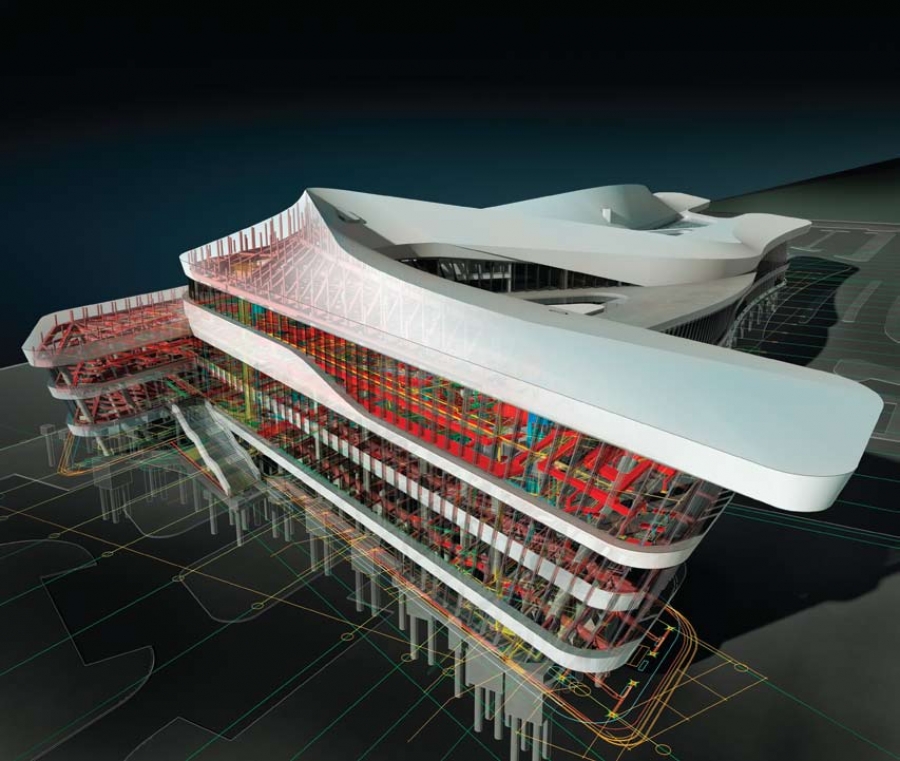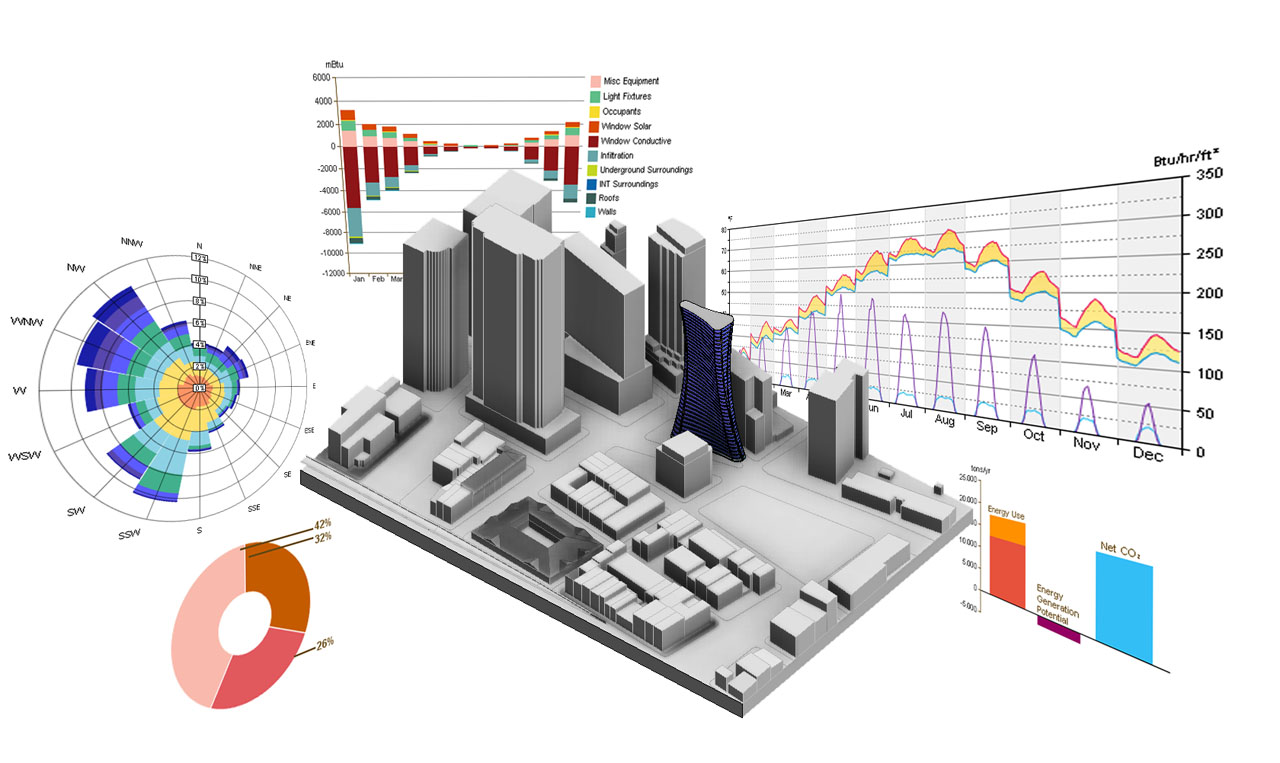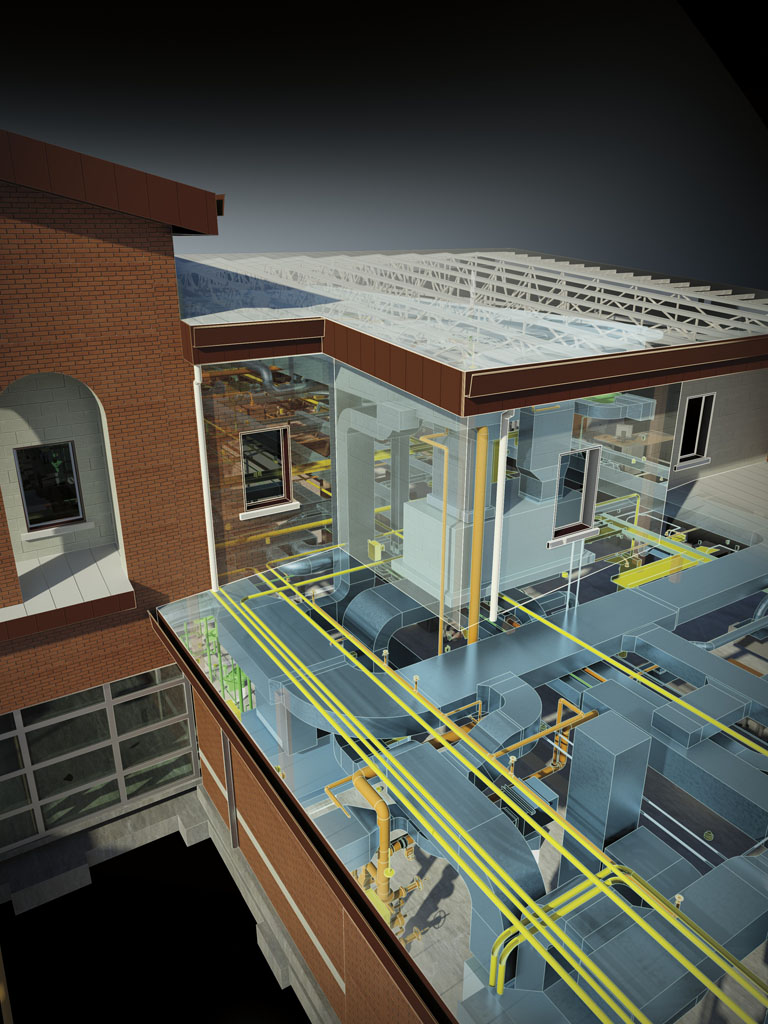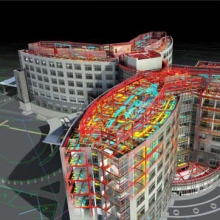BIM: Bridging the Gap between AEC and O&M
Building Information Modeling (BIM), which first proved its value as a software solution for the design and construction industries, is now being introduced in another sector: building operations. The advancement is a logical one, considering the limitations of the traditional supply chain. “There has always been a ‘handover’ from AEC to the building owner,” says Marty Chobot, Vice President of Product Management at facility management company FM:Systems, “but we need to find a way to bridge the gap between AEC and O&M.”

Chobot points out that in an age of computerized design, this separation has become particularly problematic. “Designers work from digital files, then convert them to paper to give to the building owners and operators, who convert them back into digital format.” FM:Systems, which specializes in helping companies to manage their inventory of space and properties, is working in partnership with Autodesk to bring about changes in the industry workflow.
Taking the Long View
Building owners, who initially became familiar with BIM as a design and construction tool, soon realized that its information-rich dataset could be carried over into operations and maintenance (O&M). Their interest in BIM has generated a top-down interest in its use.
“About a year ago, companies really started looking at BIM’s post-construction value as a way to recoup costs and extend its benefits to a building’s lifecycle. After all, it’s the lifecycle that represents about 80% of a building’s overall cost,” says Jim Lynch, Vice President of the Building Product Line Group for Autodesk’s AEC Division. “Some large companies and organizations – Starbucks, Marriott, the U.S. General Services Administration – are all mandating it now.”
Chobot concurs: “Owners that have a long-term relationship with their buildings, as with campus institutions or healthcare facilities, definitely see the value. But BIM is also useful in retail, where there is a lot of duplication on the front end with new store fit-outs and such.”
“[The process] will go downstream. Everyone’s job will change. And AEC firms seem excited about this, because [BIM] differentiates them, and it also provides a way to maintain their clients.” Marty Chobot, FM:Systems
A study undertaken several years ago by the National Institute of Standards and Technology (NIST) quantified the problem, concluding that “there was at least $15.8 billion lost in 2004 due to inadequate interoperability in the commercial, institutional, and industrial facilities industries (Gallaher et al. 2004). Two-thirds of the costs are borne by owner-operators, which incur these costs mostly during ongoing facility operations and maintenance.”
Bridging the Gap
Several approaches to accomplish positive changes by using BIM are being explored. Currently, it is most common to connect a Revit Architecture model to existing facilities management systems and softwares. This is the methodology being fine-tuned in the partnership between Autodesk and FM:Systems.
“The Revit model is great as a hub,” says Chobot. “You can hang a lot of information off of it.” By connecting FM:Systems facilities software to that model, a lot of data can be extracted, ranging from spatial arrangements to mechanical, engineering, and plumbing (MEP) layouts. The two information systems are capable of mutual updates; information input into either software will update the other. “It is also useful to link to BIM’s energy analysis,” says Chobot. “This provides a baseline for energy performance.”
Autodesk product developers are also working to ensure that Revit can connect with IBM’s Maximo Asset Management software, which will assist in the management and scheduling of building maintenance tasks. The intent is to give facility managers a dashboard from which to work; again, the two softwares would be capable of synchronizing with one another.

Perhaps the most comprehensive solution to facilities O&M has been in the works since last year. Known as Project Dasher, this Autodesk initiative is still in the research phase, but its aim is to create an interactive, 3D “visualization prototype.” By consolidating data from the Building Automation System, submeters, and even customized sensors, Project Dasher could greatly simplify and streamline facilities O&M, as explained in Autodesk’s informational video.
Into the Future
 Ever-evolving electronic hardware will continue to feed ever-evolving software solutions. Software designers are brimming with ideas about how their field will change in the near future. For example, how long will digital dashboards be tied to a computer monitor? “There is a possibility of using augmented reality to look inside a building,” says Lynch. “The Autodesk labs have a prototype of an app that will allow a real building to interface with a mobile device.”
Ever-evolving electronic hardware will continue to feed ever-evolving software solutions. Software designers are brimming with ideas about how their field will change in the near future. For example, how long will digital dashboards be tied to a computer monitor? “There is a possibility of using augmented reality to look inside a building,” says Lynch. “The Autodesk labs have a prototype of an app that will allow a real building to interface with a mobile device.”
"About a year ago, companies really started looking at BIM’s post-construction value as a way to recoup costs and extend its benefits to a building’s lifecycle. After all, it’s the lifecycle that represents about 80% of a building’s overall cost.” Jim Lynch, Autodesk
And what will carry over to the brick-and-mortar world from all of this technological change? Industry experts are beginning to speculate that working relationships will undergo a fundamental shift. In the 20th century, the building industry became fragmented into "silos" of knowledge and expertise; it is hoped that in the 21st century, those silos will be removed. “[The process] will go downstream,” Chobot predicts. “Everyone’s job will change. And AEC firms seem excited about this, because [BIM] differentiates them, and it also provides a way to maintain their clients.”
Ultimately, changes in workflow always change the market. For the building industry of the near future, this means that as the model coalesces information, so too might it coalesce once-divided professions.

Kristin Dispenza
Kristin graduated from The Ohio State University in 1988 with a B.S. in architecture and a minor in English literature. Afterward, she moved to Seattle, Washington, and began to work as a freelance design journalist, having regular assignments with Seattle’s Daily Journal of Commerce.
After returning to Ohio in 1995, her freelance activities expanded to include writing for trade publications and websites, as well as other forms of electronic media. In 2011, Kristin became the managing editor for Buildipedia.com.
Kristin has been a features writer for Buildipedia.com since January 2010. Some of her articles include:


